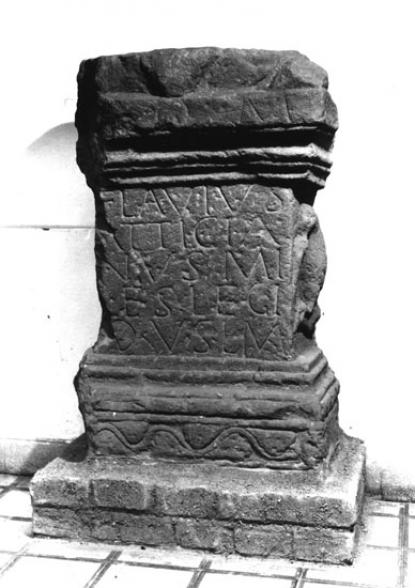2024. November 21. Thursday
Balaton Museum - Keszthely
|
|
Address: 8360, Keszthely Múzeum u. 2.
Phone number: (83) 312-351, (83) 511-335
E-mail: titkarsag@balatonimuzeum.hu
Opening hours: 01.09-31.10.: Tue-Sat 10-17, 01.11-30.: Tue-Sat 10-16
|
Museum tickets, service costs:
|
Ticket for adults
|
800 HUF
|
/ capita
|
|
Group ticket for adults
(min. 8 people)
|
600 HUF
|
/ capita
|
|
Ticket for students
|
400 HUF
|
/ capita
|
|
Ticket for pensioners
|
400 HUF
|
/ capita
|
|
Ticket for families
(2 adults + min. 2 children)
|
400 HUF
|
/ capita
|
|
Combined ticket
(I PROGRAMME PACKAGE: ticket + guided tour at the permanent exhibition + museum pedagogy activity for student card holders over 10 people )
|
750 HUF
|
|
|
Combined ticket
(II PROGRAMME PACKAGE: ticket + guided tour at the permanent exhibition + museum pedagogy activity + arts and crafts activity over 10 people )
|
1450 HUF
|
|
|
Guide
(on prior notice)
|
4500 HUF
|
The region of Balaton became a part of the road and settlement network of the ancient Pannonia provinci. Various stone relics tell us about the life of the villages and villa districts. These stones were often reused during the Middle and the Modern Age.

The grave relics of the 1-3rd centuries are ornamented by mythological scenes, animals, herbal motives or the reliefs of the dead.
The family gardens were often adorned by statues.
The altar stones witness to the Roman superstitions. Tghey had mostly been erected to the uttermost "Jove", but we can also see altars built for Juno and Neptunus. The name and rank of the erectors had often been marked.
Along roads high cylinder shaped milestones indicate how much the wanderer was to go to get to the nearest major settlement. The demonstrated piece had been standing 46 miles away from Aquincumtól.
The building works are represented by roof covering bricks, support trunks, plinths, pillars, etc. The building elements of the Kékkút building were chiseld from red sand.

The grave relics of the 1-3rd centuries are ornamented by mythological scenes, animals, herbal motives or the reliefs of the dead.
The family gardens were often adorned by statues.
The altar stones witness to the Roman superstitions. Tghey had mostly been erected to the uttermost "Jove", but we can also see altars built for Juno and Neptunus. The name and rank of the erectors had often been marked.
Along roads high cylinder shaped milestones indicate how much the wanderer was to go to get to the nearest major settlement. The demonstrated piece had been standing 46 miles away from Aquincumtól.
The building works are represented by roof covering bricks, support trunks, plinths, pillars, etc. The building elements of the Kékkút building were chiseld from red sand.
